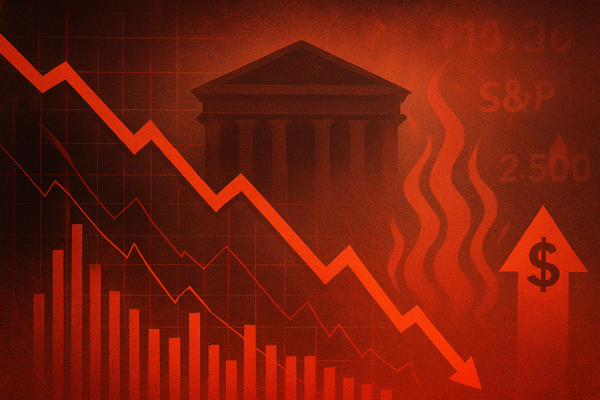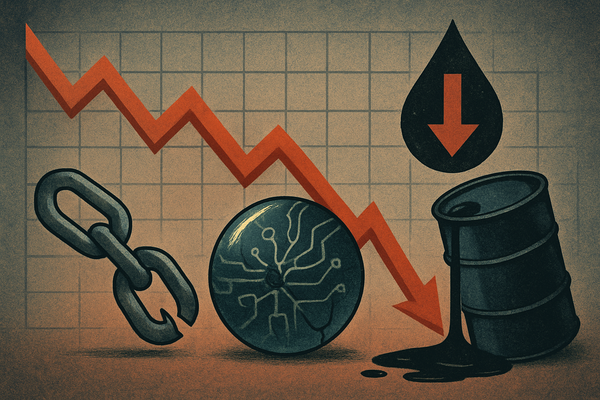Asia-Pacific Real Estate Braces for a Tale of Two Markets: U.S. Easing Sparks Optimism, Japan Charts Its Own Course

The Asia-Pacific commercial and residential real estate markets are on the cusp of a significant transformation, driven largely by the anticipated U.S. rate easing cycle. This shift promises a potential resurgence in investment and activity across the region, offering a much-needed boost to developers and investors after a period of higher borrowing costs. However, the narrative is not uniform, as varying economic conditions and monetary policy stances create a complex tapestry of opportunities and challenges. At the heart of this divergence is Japan, which stands as a unique outlier, contemplating further domestic rate hikes even as global counterparts prepare for easing, setting the stage for intriguing dynamics in capital flows and market performance.
The immediate implication of a potential U.S. rate cut is a general uplift in sentiment, with analysts widely expecting a substantial rebound in commercial real estate investment. Lower costs of capital, increased liquidity, and greater clarity on monetary policy direction from the U.S. Federal Reserve are poised to unlock dormant capital and spur transaction volumes. While some markets like Singapore are already witnessing an uptick, others like Hong Kong and mainland China face structural headwinds that may temper the immediate positive effects, painting a nuanced picture for the region's diverse real estate landscape.
U.S. Rate Easing Catalyzes APAC Rebound, While Japan Navigates Domestic Tightening
The prospect of the U.S. Federal Reserve initiating a rate easing cycle has sent ripples of optimism across Asia-Pacific real estate, promising a lower cost of capital and increased liquidity that could rejuvenate investment activity. This anticipated policy shift is expected to fuel a rebound in commercial real estate investment across the region, with fund managers poised to see a boost in capital raising and transaction volumes. Indeed, the third quarter of 2024 has already shown an uptick in deal pipelines, signaling investor readiness for a more favorable financial environment.
However, the impact is far from monolithic across the diverse APAC economies. Singapore has emerged as an early beneficiary, with expectations of monetary easing already contributing to a substantial 56.6% year-on-year increase in transaction volume during the first half of 2024. Singapore-listed property trusts (S-REITs) have mirrored this positive trend, experiencing a 13% rise in unit prices since early July. Hong Kong's commercial property market is also projected to see a mild boost in transactions, with investment volumes anticipated to exceed HK$30 billion in 2024 and further rebound to HK$37 billion in 2025, potentially attracting international capital to undervalued assets. Nevertheless, an existing oversupply and structural limitations like land scarcity might cap the overall upside. In stark contrast, mainland China's real estate market continues to grapple with weak leasing demand and sluggish economic growth, meaning that even lower financing costs have yet to significantly invigorate sentiment or transaction volumes, which are expected to remain subdued. Countries like Australia and South Korea, whose domestic policy rates often align with the U.S., are also forecasted to experience increased transaction volumes, while India's robust economic sentiment is expected to sustain capital deployment in its real estate sector. Across the board, capitalization rates are generally projected to soften through 2024, particularly in mainland China, Japan, Singapore, and Australia, before stabilizing in early 2025.
Meanwhile, Japan finds itself charting a distinctly different course. While much of the world anticipates rate cuts, the Bank of Japan (BoJ) maintained its short-term policy rate at 0.5% in September 2025 – its highest level since 2008 – and signals point towards further gradual domestic rate hikes. This decision, backed by a 7-2 vote within the BoJ board, underscores a growing hawkish sentiment. The BoJ's cautious approach is influenced by a complex interplay of political uncertainties, the ongoing assessment of new U.S.-Japan trade deals, and a prioritization of economic stability over aggressive inflation control, even as headline inflation remains elevated. Despite these considerations, market consensus anticipates the BoJ to raise rates by at least 25 basis points by the end of 2025, possibly as early as October 2025 or January 2026. This policy normalization is further signaled by the BoJ's decision to begin selling its holdings of exchange-traded funds (ETFs) and Japan real estate investment trusts (J-REITs). This divergence creates a unique dynamic where falling U.S. rates and rising Japanese rates could narrow yield differentials, potentially leading to the unwinding of "carry trades" and a strengthening yen, adding a layer of complexity to global capital flows and market volatility.
Asia-Pacific's Shifting Fortunes: REITs Poised for Gains, Developers Face Mixed Outlook
The anticipated U.S. rate easing cycle is poised to redraw the lines of profitability within the Asia-Pacific real estate sector, creating clear winners and a more challenging environment for others. Publicly traded real estate investment trusts (REITs) across the region are widely expected to be significant beneficiaries. Lower interest rates translate directly into reduced financing costs for these entities, which typically carry substantial debt. This improves their net operating income and, consequently, their distributions to unitholders, making them more attractive investments. Specifically, Singapore-listed property trusts (S-REITs) such as CapitaLand Integrated Commercial Trust (SGX: C38U) and Ascendas REIT (SGX: A17U) have already seen their unit prices climb, indicating investor confidence in their ability to capitalize on declining borrowing expenses. Hong Kong REITs, exemplified by Link Real Estate Investment Trust (HKEX: 0822), are also anticipated to be among the primary beneficiaries, particularly those with exposure to office properties, as reduced rates could stimulate transaction volumes and improve property valuations.
Conversely, the landscape for real estate developers and property owners will be more varied. In markets closely tied to U.S. monetary policy, such as Australia and South Korea, developers may find renewed vigor as borrowing costs fall, making projects more viable and enhancing buyer affordability in the residential sector. This could lead to increased project launches and sales volumes. Companies with strong balance sheets and diversified portfolios in these regions, such as Mirvac Group (ASX: MGR) in Australia, could see their development pipelines accelerate. For the residential market, enhanced affordability due to lower mortgage rates will stimulate demand, benefiting developers like City Developments Limited (SGX: C09) in Singapore.
However, the picture is less optimistic for developers in markets struggling with oversupply or weak fundamental demand. In mainland China, despite the prospect of lower financing costs, the prevailing issues of tepid consumer confidence and a persistent real estate downturn mean that developers like China Evergrande Group (HKEX: 3333, currently suspended) and Country Garden Holdings Company Limited (HKEX: 2007) may continue to face significant headwinds. While lower rates might offer some relief on debt servicing, they are unlikely to fundamentally address the deep-seated problems of oversupply and declining property values without a substantial rebound in economic activity and consumer sentiment.
Japan presents a unique situation. While traditional real estate sectors like office and logistics might experience some cap rate decompression due to marginal rate increases from the Bank of Japan, the overall impact on Japanese REITs (J-REITs) could still be positive. A gradual rise in domestic rates, coupled with mild inflation and healthy economic growth, could foster rental income growth, potentially creating a "virtuous cycle" for the sector. Companies like Japan Real Estate Investment Corporation (TYO: 8952) could see resilience in their portfolios. However, any rapid appreciation of the Yen, driven by the widening interest rate differential between Japan and easing Western economies, could pose challenges for export-oriented Japanese companies, indirectly impacting the broader economic climate that supports real estate. The unwinding of yen-funded carry trades could also introduce volatility, affecting global capital flows and potentially the valuation of certain Japanese assets.
Broader Implications: Reshaping Capital Flows and Regional Competitiveness
The anticipated U.S. rate easing cycle, juxtaposed with Japan's unique path of domestic tightening, is poised to instigate a significant realignment of capital flows and reshape the competitive landscape across the Asia-Pacific real estate markets. Historically, periods of lower global interest rates tend to encourage greater cross-border investment into higher-yielding real estate assets. This cycle is expected to drive capital towards the APAC region, particularly into markets offering attractive yields and stable growth prospects. The re-pricing of risk associated with lower borrowing costs will likely make real estate a more compelling alternative to fixed-income assets, drawing institutional investors and private equity funds back into the fold.
This event fits into a broader industry trend of increasing investor focus on diversification and yield-seeking behavior. As traditional Western markets face their own challenges, the robust demographics and economic growth potential of many APAC nations continue to make them attractive long-term propositions. The divergence in monetary policies between the U.S. and Japan, in particular, will have ripple effects. As Japanese rates rise and U.S. rates fall, the narrowing yield differential could lead to the unwinding of long-standing "carry trades," where investors borrowed in low-interest yen to invest in higher-yielding assets abroad. This unwinding could repatriate capital to Japan, strengthening the yen and potentially causing volatility in global financial markets as liquidity shifts. For companies operating across multiple APAC markets, strategic adaptations will be crucial to navigate these differing monetary environments and optimize capital deployment.
Regulatory and policy implications will also come into sharper focus. Governments in the region may adjust their housing and investment policies to either capitalize on increased capital inflows or mitigate potential risks such as overheating property markets in certain segments. For instance, Singapore, already a magnet for global capital, might consider macro-prudential measures if property prices accelerate too rapidly. Conversely, regions like mainland China, where policy interventions have been significant in cooling the market, might find renewed flexibility to support their struggling real estate sector, albeit carefully to avoid reigniting speculative bubbles. Historically, similar global interest rate cycles have demonstrated that markets with strong fundamental demand and transparent regulatory frameworks tend to fare better in attracting and sustaining foreign investment, whereas those with structural imbalances can see the benefits diluted or even exacerbated by global capital shifts. This period will test the resilience and adaptability of regulatory bodies across the region.
The Road Ahead: Navigating Divergence and Seizing Opportunities
Looking ahead, the Asia-Pacific real estate market faces a short-term landscape characterized by both cautious optimism and strategic reorientation. In the immediate future, markets closely aligned with the U.S. rate easing cycle are likely to experience a surge in transaction volumes and potentially modest price appreciation, particularly in prime commercial assets and well-located residential properties. Investors will be keen to identify undervalued assets and capitalize on the improved cost of capital. However, the path will not be entirely smooth; persistent geopolitical tensions, supply chain disruptions, and the lingering effects of global inflation could introduce volatility, requiring investors to remain agile and selective.
In the long term, the divergence in monetary policies, particularly between the U.S. and Japan, presents both challenges and unique opportunities. As the Bank of Japan continues its gradual path toward normalization, a stronger yen could emerge, influencing Japanese real estate investment by making it more expensive for foreign buyers but potentially more attractive for domestic investors. This could also encourage Japanese investors to repatriate capital, further strengthening the domestic market. For the broader APAC region, the flow of capital will likely become more discerning, favoring markets with robust economic fundamentals, transparent regulatory environments, and favorable demographic trends. Strategic pivots will be essential for developers and investors, emphasizing sustainable development, adaptive reuse of assets, and a keen understanding of local market nuances.
Emerging market opportunities are likely to center on sectors resilient to economic fluctuations, such as logistics and data centers, which continue to benefit from e-commerce growth and digital transformation. Residential sectors in growing urban centers, particularly those attracting young professionals, will also remain attractive. Conversely, older, less efficient office spaces in some struggling markets might face challenges. Potential scenarios range from a broad-based regional recovery driven by synchronized global growth and sustained lower rates, to a more fragmented outcome where only select markets thrive due to unique local conditions. Investors should monitor central bank communications, economic data, and capital flow trends in the coming months, paying close attention to the interplay between the Federal Reserve's easing and the Bank of Japan's tightening, which will significantly shape the fortunes of Asia-Pacific real estate.
Conclusion: A Nuanced Outlook for APAC Real Estate Amidst Monetary Policy Crosscurrents
The Asia-Pacific real estate market is poised at a critical juncture, navigating the crosscurrents of global monetary policy shifts. The overarching sentiment is one of cautious optimism, primarily fueled by the anticipated U.S. rate easing cycle, which is expected to lower borrowing costs, boost liquidity, and reignite investment activity across many regional markets. However, the narrative is far from uniform, with individual markets exhibiting varying degrees of resilience and responsiveness, and Japan standing as a unique case charting its own course of domestic rate hikes. The interplay between these divergent monetary policies will undoubtedly define capital flows, asset valuations, and investment strategies in the months and years to come.
Key takeaways from this intricate scenario include the expected rebound in commercial real estate investment in many APAC economies, particularly Singapore, Australia, and South Korea, driven by improved affordability and lower financing costs. REITs across the region, especially S-REITs and Hong Kong (HKEX: 0822) REITs, are positioned as strong beneficiaries due to reduced debt servicing costs. Conversely, markets like mainland China continue to face significant structural challenges that may dampen the positive effects of global easing. Japan's decision to pursue gradual rate hikes introduces a counter-narrative, potentially strengthening the yen and influencing global carry trades, while its domestic real estate market retains a degree of resilience, particularly for J-REITs (TYO: 8952) enjoying rental growth.
Moving forward, investors should remain highly selective and attuned to localized market dynamics. While the broader trend points to an increase in real estate activity and a potential stabilization of cap rates in early 2025, the specifics of each market—its economic fundamentals, supply-demand balance, and regulatory environment—will dictate success. Watch for further communications from the U.S. Federal Reserve and the Bank of Japan (BOJ), as their policy decisions will continue to be the primary drivers of capital movement and market sentiment. The next few months will reveal how effectively APAC markets can leverage global tailwinds while mitigating unique domestic challenges, making strategic foresight and detailed market analysis more crucial than ever for navigating this evolving landscape.



